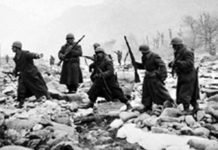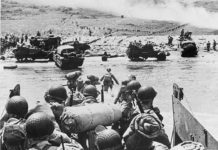Trench warfare must have been a totally horrible and demoralising experience for those soldiers at the front line. Looking back almost a hundred years it seems like an alien existence and a completely barbaric way of fighting. Even at the time it would have been terrible for the most part. People being people there would of course have developed a camaraderie but most soldiers would know that they would at least suffer an injury, if not a long and painful death in the trenches. Those young men who marched off so eagerly to war, in a blaze of hope and glory, probably could never have imagined what the reality of life in the trenches would have been like either.
When I think of the First World War my mind’s eye always pictures the trenches with their downtrodden soldiers and battlefields, however many more soldiers served as support and back up to these trenches. Trench warfare was not an entirely new concept but began in the Great War in September 1914. It finally ended in August 1918 when the Allies made a breakthrough and a war of movement restarted. However from the period of September 1914 to August 1918 the First World War was simply a war of entrenchment. Forces were often holed up for days, weeks or months on end making just small gains and wins. The actual hand to hand fighting was infrequent but always resulted in heavy losses on both sides. It must have taken nerves of steel to go ‘over the top’ knowing what awaited you.
Trenches were only dug in the first instance as temporary cover but ultimately both sides had to dig in to maintain their hold and position. Each trench had its own peculiar problems depending on the natural terrain. Some were just muddy depressing bogs which would have been soul destroying in any circumstances. Trenches were dug in small sections so that a bomb would not take out everyone in one fell swoop. There was a main front line trench followed by support trenches. Towards the latter part of the war these trenches became highly protected with fortresses and barbed wire. There were also decoy ‘dummy trenches’ with the aim of drawing the enemies fire. This would help to place the enemy and waste their ammunition. All in all there was a warren of trenches.
Trenches on the whole were dire places. The troops had to basically live in squalor eating, sleeping, dying and using the toilet in this dreadful place. Rats and other vermin shared these living conditions. The climate in France was such that at certain times of the year the trenches would be stinking, hot, holes and at other times the soldiers would be knee deep in mud and filth.
I suppose this trench warfare was necessary and worked in the Great War, as more sophisticated weaponry and means of transport had not yet been invented or developed. The massive warren of trenches used by both sides covered a vast area. The price was that all too many men lost their lives, or became mentally or physically scarred for life. The trenches did enable each side to gain a little ground at times and this warfare was instrumental in the victor’s glory but what a dreadful price to pay.








